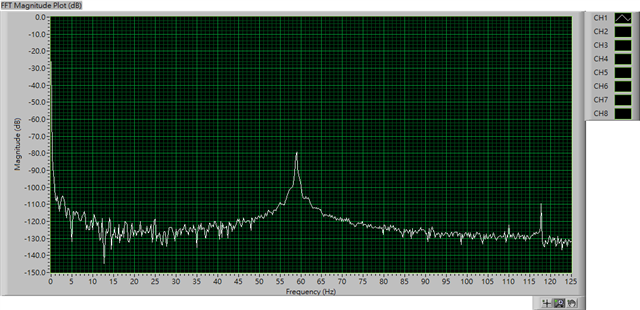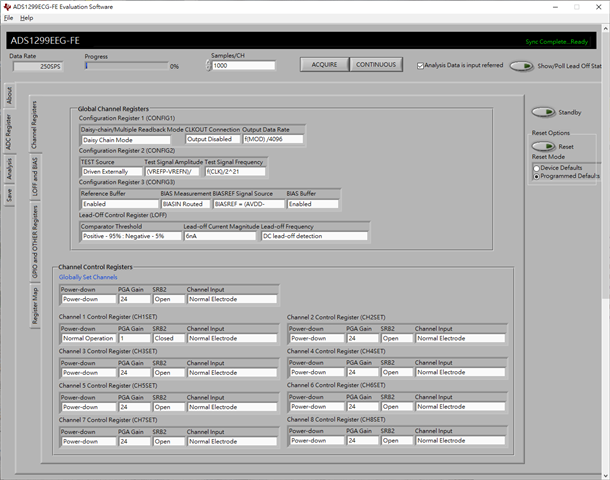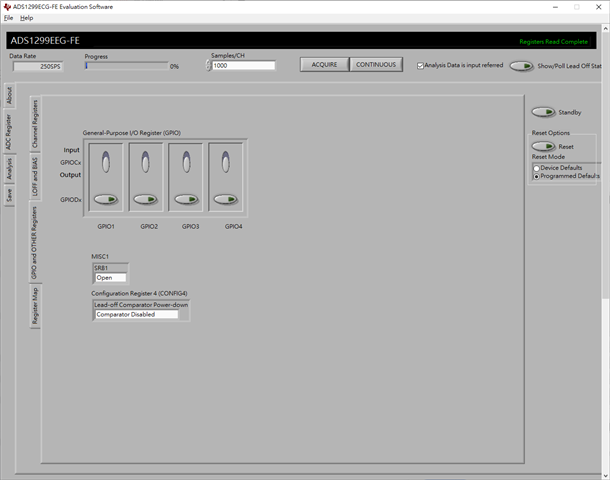Tool/software:
Hi all EEG experts, I would like to ask a few questions.
We only measured one channel of EEG signals.
The ADS1299 FFT result is displayed below.

However, we aim to lower the baseline noise level to around -140 dB because brainwave signal is not obvious.
Is there any misconfiguration?
Or is there any area where we can further improve?
If anyone could kindly provide an answer, I would be sincerely grateful.
The connection is as below,

- Ch1 + : Connected to the scalp at the Cz position
- Ch1 - : Connected to the earlobe
Reference Connection:
- Short-circuit Ch1- with the pin to its left
- On JP25, pins 1–2 and 5–6 are also short-circuited
- The two left pins on JP7 are shorted
- The two right pins on JP8 are shorted
Bias Connection:
- JP1 pin2 is connected to the forehead
And the ADS1299 Evaluation Software settings are as below,




